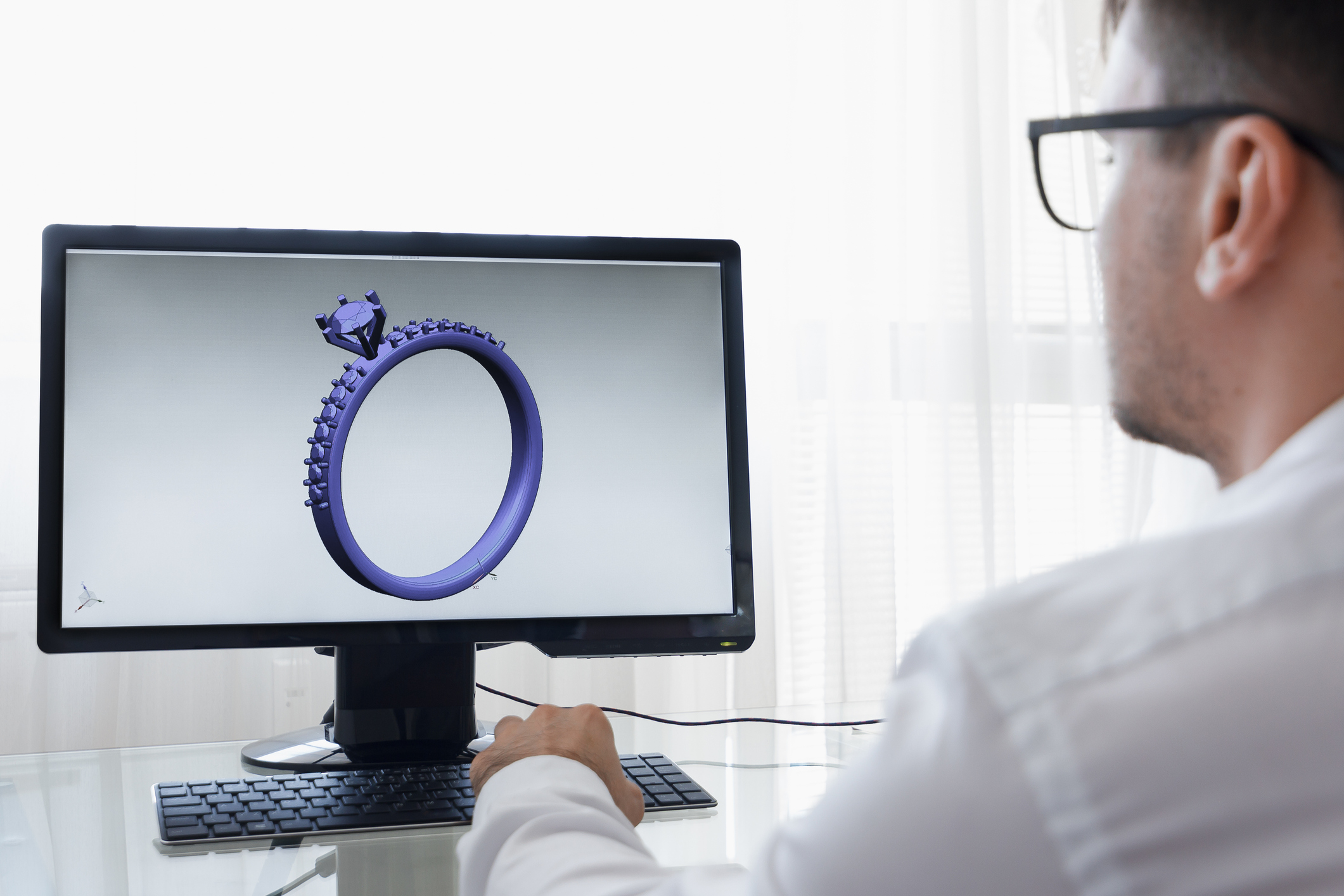The right jewelry display ideas can make the difference between complacency and excitement for your target consumer audience. How rings, necklaces, earrings, and more show up on shelves and racks can significantly impact customer engagement.
Jewelry is an art form, and its aesthetics are what draw people in for a closer look. A well-thought-out display must highlight the piece’s beauty, align with its style impression, and contribute to the overall ambience of your store. Retailers must understand that their display space is a powerful part of brand storytelling.
Every in-store retail jewelry display, and how you showcase pieces in photos for your ecommerce site, sets the tone for the entire shopping experience. This is about so much more than jewelry organization. Of course, a cluttered or jumbled tray or rack will do nothing to help shoppers become buyers and brand fans. Overly creative or fussy displays can get in the way of the classic design or unique visual elements in each piece, however.
When you choose the right display options, you create an emotional connection, foster a sense of urgency to buy, and make each shopper feel like a successful treasure hunter. Transform your shop with the following ideas and tips.
Different types of jewelry displays for unique pieces
The following creative jewelry display ideas work for a variety of pieces and brand aesthetics. Simply adjust the layout, materials used, and accent options to match your brand identity. Remember that a cohesive jewelry display design should incorporate elements of your overall brand, so shoppers grow to associate quality and customer care with your company.
1. Mannequins and human forms
No matter what type of jewelry your shop sells, you can find a full or partial mannequin display piece to use. These range from full face and torso options to much smaller chest, wrist, or single ear designs. They usually come in white and black with a sleek or velvety surface.
Consider thinking outside the box and switching up forms with different types of jewelry. Use a full dress form to showcase a variety of pins and brooches. Use a bust mannequin with holes to create an earring display.
.jpeg)
2. Trays and other horizontal options
Perhaps the most practical and user-friendly jewelry display options for expensive pieces consist of individual trays. These short-sided boxes are often kept in locked cases until a customer expresses their desire for a closer look. For more access, multi-tier risers can hold multiple pieces in a way that makes them easier to view on counters and shelves. Retail supply companies frequently offer modular sets that allow you to build your own arrangements and change them based on current inventory.
.jpeg)
3. Racks, walls, and vertical options
Most shops make use of vertical space with a variety of racks that allow products to dangle, such as necklaces, or hang in rows like earring cards. Stand these on tables and counters or use wall space to your benefit. While costume jewelry shows up well enough on a basic pegboard, think beyond the ordinary for higher end options. Imagine pink ribbons strung between crystal pegs for a delicate feminine collection, or iron nails holding up rugged men’s bracelets. A fancy picture frame with a foam board backing works for a classy look.

4. Traditional jewelry box designs
This option is especially attractive for high-end retailers with a more traditional or vintage aesthetic. Rather than mannequins or display racks and risers, make things look like the finest jewelry box with wood forms, velvet cushions, and accents like tiny brass hinges and clasps.

5. Unique or unexpected display pieces
Always remember that the primary goal is to make the jewelry pieces look great so that shoppers want to buy them. Never let the display overpower the products. That being said, there’s plenty of unusual options you can go for.
These are just a few unique ideas to consider:
- Natural elements like chunks of rock or wood holding gemstone pins.
- Terra cotta flower pots with faux stems in foam displaying floral pieces.
- Resin shoreline tray displaying shell jewelry on top of faux waves
.jpeg)
Lighting, mirrors, materials, and space
Lights, product reflections, the materials you choose, and the negative space around the items all affect shopper perception and the overall feel of your shop.
No matter what display ideas you choose from the list above, always follow these basic rules:
- Use sufficient light to make the jewelry details and actual color obvious. A white background creates more light in the space.
- Mirrors should highlight the jewelry and not confuse things. They are primarily for consumers to imagine themselves wearing the pieces.
- Use display materials that complement instead of detracting from the jewelry material. Remember each option has a feeling behind it. Steel is very different from a hunk of driftwood, for example. When in doubt, go for simple.
- Leave enough space between pieces to make them easy to view without handling. If you do not have enough room, leave this for the statement pieces.
How you arrange jewelry collections matter
Different pieces of jewelry can obviously go in sets, which you should display together for easier shopping options and upsell opportunities. Arranging singular pieces works well in several different ways.
Organize by jewelry type
Put the whole collection of necklaces together, the brooches somewhere else, and the rings on the other side. This works well if the shopper is looking for a specific piece. However, it can disrupt style considerations or make it more difficult to cross-sell.
Arrange pieces by cost
While certain jewelry pieces can take center stage as statement pieces with exceptionally high price tags, most high-end shoppers do not look for their next pair of earrings or bracelet with a specific price in mind. Besides, who would want to be seen shopping in the ‘cheap goods’ or ‘discount’ section of your boutique?
Consider a color-sectioned jewelry display
While this can do a lot for the overall aesthetics of the store, it can present some problems when it comes to shopping. Yes, some people browsing the jewelry display trays and racks may be on the lookout for a specific shade to match their new outfit. It is more likely that people shop by trend or by inspiration. Color-coded displays also disrupt collections, styles, and can limit the chance for inspiring purchases beyond the immediate need.
Conclusion
As important as jewelry displays are for in-store engagement, you need the same attention to detail for online shoppers and brand relationship building after they walk out the door. A tool like Clientbook makes this simple. With the user-friendly dashboard on hand, you can gather, track, analyze, and use unique customer data to perfect your displays, service, and more.

%20(4).jpg)



